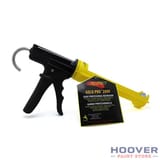I'm sure everyone here has their own ways, but I've siliconed a few thousand showers and trained people who've never done it. My 2 cents
>type of silicone
Use RTV for interior, not caulking per se, silicone is easier.
>Tip
cut the tip at 45 degrees, not too big, maybe 1/4 inch width at the largest point. Once you've done this, cut the sharpest end off, just 1/16th, it let's air out as you pull a bead.
>surface
Dry as hell, if it's not solvent reactive, wipe it with acetone. To remove your existing silicone, wait until it's dry and carefully go at it in single determined but precise cut with a utility knife, you should be able to make two cuts (one from each surface plane) and pull the old bead out. Any excess can be removed with a cotton cloth and rubbing action. Non solvent reactive surfaces can be hit with acetone
>application
Working from your shoulder, loose and free, you want to pick your angle and slowly pull the line of silicone without leaving air bubbles under it, you should have a nearly perfect bead just from the pull. Never pull right to a corner, start in a corner, pull to center, release the pressure and go to the other corner and repeat to meet at your other bead. I usually do verticals before horizontals.
>finishing the bead
Typically use of a tool is reserved for very large beads, anything thin shoule just require your finger. If you get any frumpy spots, lick your finger liberally or dip in soapy water and pull over it and a steady angle. If you do use a tool, your initial bead still needs to be very nice. If you get bubbles and its still wet, poke with the tip of a sharp knife and lick your finger to tidy it up. If you wait too long and it has skinned just let it dry and cut it.
>colors
If the area looks good without silicone, consider using something like translucent or clear instead of white, much more forgiving.
>gun
Look up something like picrel dripless, it's my favorite. Electric ones are insanity for interior work, and won't help.
